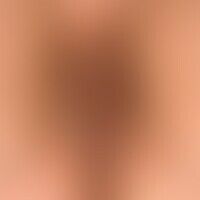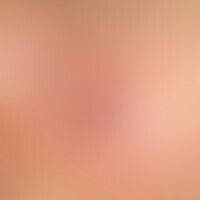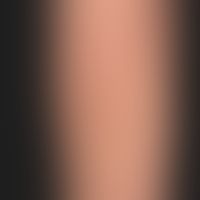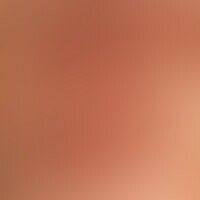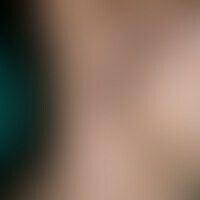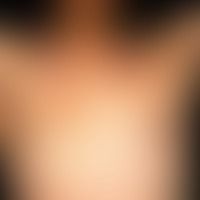Image diagnoses for "Plaque (raised surface > 1cm)"
586 results with 2919 images
Results forPlaque (raised surface > 1cm)

Vulvar lichen sclerosus N90.4
Lichen sclerosus of the vulva: verrucous lichen sclerosus (arrow) with left-sided, flat squamous cell carcinoma; extensive atrophy of the small labia.

Transitory acantholytic dermatosis L11.1
Transitory acantholytic dermatosis (M.Grover): detailed picture

Parapsoriasis en plaques large L41.4
Parapsoriasis en plaques, grandiose: completely symptomless, sharply defined, disseminated spots and plaques; only when the skin is folded does a cigarette-paper-like pseudoatrophic architecture of the skin surface become visible (important diagnostic sign!).

Balanitis simplex N48.11
Balanitis simplex: chronic recurrent balanitis of unknown aetiology since several years. 43 years old patient. blurred erosive red plaques. broad synechia between preputial leaf and glans penis. remark: circumcision is strongly recommended for prophylactic reasons!
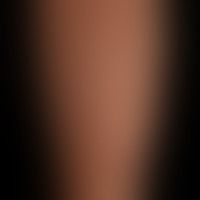
Necrobiosis lipoidica L92.1
Necrobiosis lipoidica. necrobiosis lipoidica slowly "growing" for several years. large, rather discrete scarring in the centre. yellow-brownish plaque at the edges.

Lupus erythematosus (overview) L93.-
Systemic lupus erythematosus: chronic, UV-provoked, locally constant maculo-papular exanthema; concomitant: recurrent fever attacks, fatigue and tiredness, arthralgia, inflammation parameters +, ANA high titer positive, rheumatoid factor +, DNA-AK+.
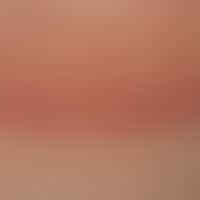
Tinea corporis B35.4
Tinea corporis in immunodeficiency. Marginal area of the lesion with broad, raised, scaly margins. Centrally located healing pattern with scaly plaques and papules between normalized skin areas.

Circumscribed scleroderma L94.0
unilateral circumscribed scleroderma: unilateral "segmental" circumscribed scleroderma. the lightly pigmented large-area plaques have existed for about 5 years. no increasing "growth" in the last few months.

Dermatitis contact allergic L23.0
Dermatitis contact allergic: 53 years old, still working bricklayer. chronic eczema with disseminated red, partly skin-coloured papules, which in places have conflated to blurred, lichenified plaques. furthermore discrete, laminar, fine-lamellar scaling as well as multiple partly encrusted erosions. distinct itching. proven chromate sensitisation.

Pemphigus chronicus benignus familiaris Q82.8
Pemphigus chronicus benignus familiaris: migrating, circulatory plaques covered with scales and crusts

Contact dermatitis allergic L23.0
Acute contact allergic eczema with scattering reaction after application of a gel containing diclofenac; linear patterns (Koebner phenomenon) in the upper third of the dermatitis.

Necrobiosis lipoidica L92.1
Necrobiosis lipoidica: 2-year-old, solitary, chronically stationary, approx. 3.5 x 3.0 cm in size, localized on the left lower leg, blurredly limited, brown-reddish plaque with central atrophy.

Tinea corporis B35.4
Tinea corporis in immunodeficiency. 24 x 18 cm large, chronic (>12 months), anular, not pre-treated, itchy plaque (inlet: marginal zone enlarged) with delicate Collerette-like marginal scaling.

Pagetoid reticulosis C84.4
Reticulosis, pagetoid (disseminated type Ketron and Goodman): For several years slowly migrating, partly anular, partly garland-shaped, little itchy, brown-red, only minimally elevated, broadly margined plaques with parchment-like surface.

Lichen planus (overview) L43.-
Lichen plaLichenplanus classic type: for several months, itchy, polygonal, partially confluent, smooth, shiny papules that have remained in place for several months
